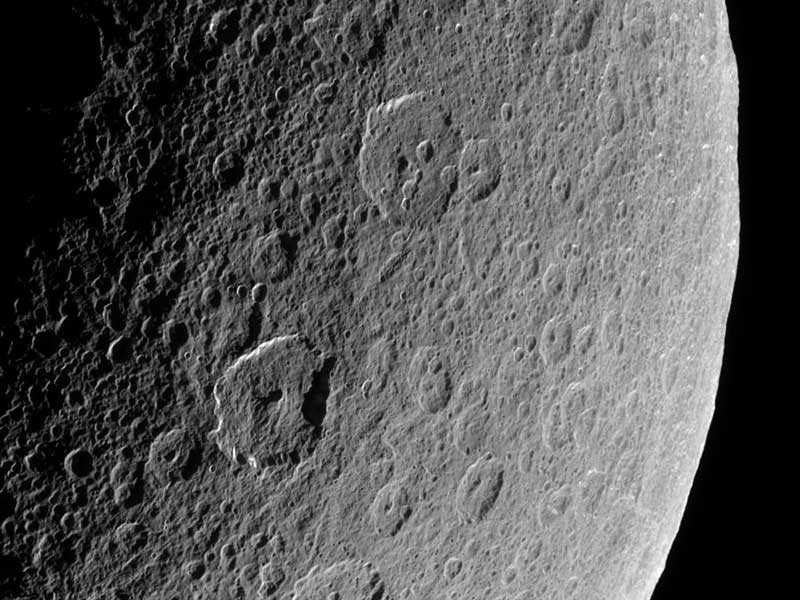
|
Explanation: Saturn's ragged moon Rhea has one of the oldest surfaces known. Estimated as changing little in the past billion years, Rhea shows craters so old they no longer appear round their edges have become compromised by more recent cratering. Like Earth's Moon, Rhea's rotation is locked on Saturn, and the above image shows part of Rhea's surface that always faces Saturn. Rhea's leading surface is more highly cratered than its trailing surface. Rhea is composed mostly of water-ice but is thought to have a small rocky core. The above image was taken by the robot Cassini spacecraft now orbiting Saturn. Cassini swooped past Rhea two months ago and captured the above image from about 100,000 kilometers away. Rhea spans 1,500 kilometers making it Saturn's second largest moon after Titan. Several surface features on Rhea remain unexplained including large light patches.
|
January February March April May June July August September October November December |
| ||||||||||||||||||||||||||||||||||||||||||||||||
NASA Web Site Statements, Warnings, and Disclaimers
NASA Official: Jay Norris. Specific rights apply.
A service of: LHEA at NASA / GSFC
& Michigan Tech. U.
Based on Astronomy Picture
Of the Day
Publications with keywords: Saturn - Rhea - crater
Publications with words: Saturn - Rhea - crater
See also:
- APOD: 2025 October 11 Á Manicouagan Impact Crater from Space
- APOD: 2025 October 5 Á A Long Storm System on Saturn
- APOD: 2025 November 16 Á Crossing Saturns Ring Plane
- APOD: 2025 September 25 Á Saturn Opposite the Sun
- APOD: 2025 September 22 Á Equinox at Saturn
- APOD: 2025 February 23 Á Saturn in Infrared from Cassini
- APOD: 2025 January 12 Á Mimas: Small Moon with a Big Crater
